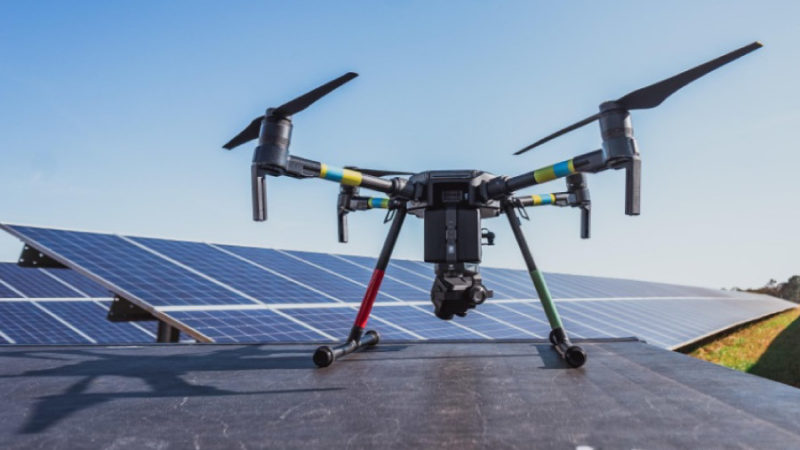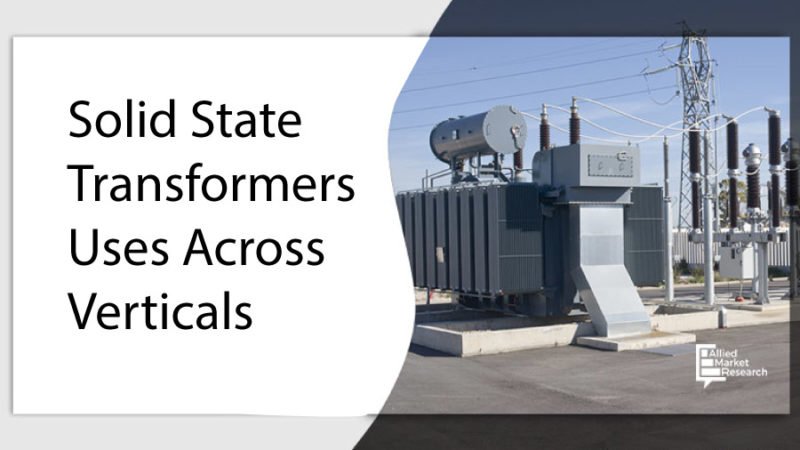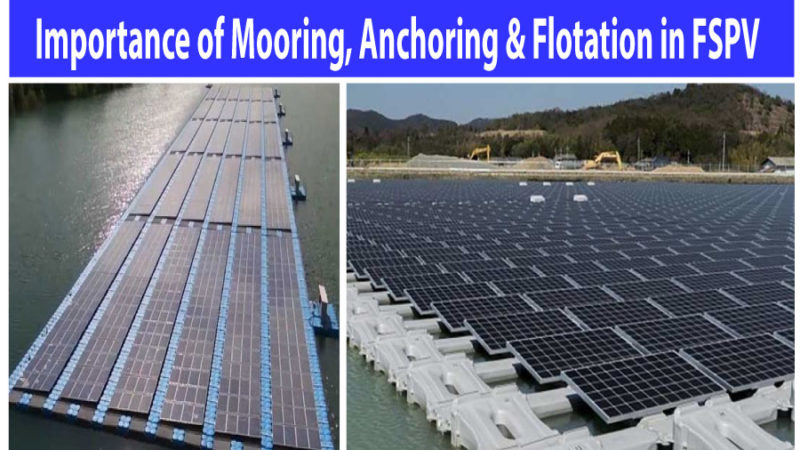IMPORTANCE OF MATERIALS IN PV MODULES

RISK MITIGATION STRATEGY: RECOMMENDED BEST PRACTICES TO SELECT PV MODULES
With the cost of PV modules dropping drastically over the past several years, manufacturers are rapidly deployingtechnology changes and compromising on quality to manage short-term goals. This is leading to a wide variation in PV modules in terms of design, construction and the “bill of materials” which has a direct and significant impact on the performance of the modules.
Existing IEC (International Electro-Technical Commission) standards for PV modules are merely qualification standards which, at best, help to identify manufacturing-related defects; however, they are not designed to test the module’s lifetime and long-term performance, particularly in extreme climatic conditions.
This enables the use of low cost but unproven materials which increases failure risks and negatively impacts investment returns. Specification of materials and properties, therefore, is critical for the project owners to ensure the use of the right materials in the modules for their projects to help minimize performance risks.
Importance of materials in PV modules
Figure 1 represents the structure of a crystalline silicon PV module and its different components. The matrix of interconnected solar cells, which converts sunlight into electricity, is encapsulated by a set of materials that fundamentally allows cells to work for 25 years.

Materials protect cells from harsh environmental stresses such as ultraviolet radiation, humidity, temperature, dust, sand, etc., as well as electrically insulate the module, which is critical from a safety point of view. If material degrades, it can have a significant impact on the performance of the cells (in terms of faster power degradation or even catastrophic failures), aswell as safety of the module.
The functions and key properties of each of these material layers are explained in section 2.1. In addition to having optimal balance of properties, the materials should be capable of retaining their properties when exposed to outdoor conditions for long periods of time.
Function and key properties of materials used in PV modules
i. Front glass: Front glass provides mechanical strength and structuralrigidity to the module, as well as long-term protectionagainst external factors such as rain and dirt. It shouldbe mechanically strong and highly transparent to allowmaximum light transmission. Front glass comes with an Anti-Reflection Coating (ARC) on the top surface toreduce light reflection.
Typical issues:glass breakage (poor installation,wind loads, insufficient thickness); degradation of ARC coating(sand abrasion and heat-humidity stress).
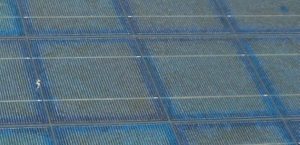
ii. Encapsulant: The encapsulant is mainly used to laminate glass, cells and backsheet, and has many requirements such as high optical transparency (to allow light transmission); good electrical insulation; excellent adhesion to glass, cells and backsheet; and resistance to UV radiation. The most commonly used encapsulant is ethylene vinyl acetate (EVA).
iii. Backsheet: The backsheet is the most critical component from both a module durability and safety standpoint because it is the first line of defense for PV cells and encapsulant from moisture corrosion and it electrically insulates the module.
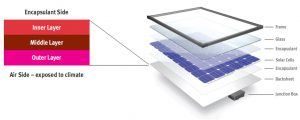
A typical backsheet for PV modules consists of three layers (see Figure 3)—outer (exposed to air and thus should withstand harsh environmental stresses); middle (critical for moisture barrier, mechanical strengthand electrical insulation properties); and inner layer (promotes adhesion between backsheet and encapsulant).
Although many types of backsheets are currently being used, only polyvinyl fluoride (PVF)-based backsheets are field proven (<0.8% power loss) for >30 years in all climatic conditions. Most of the other backsheets (PVDF, PET, fluorocoating) have 2 to 7 years of field experience and have shown multiple cases of failures, such as cracking, yellowing and delamination.
iv. Junction box: The junction box in a PV module works as an interface between internal circuitry and external cables. It also contains the protective bypass diodes that prevent the occurrence of hot spots in case of cell mismatch or shading. The outer cover of the junction box should be made of UV and weather-resistant material to avoid degradation.
v. Aluminum frames: The module is surrounded by an aluminum frame toseal edges and provide a means to firmly install modulesto the metal structures. The thickness of the frame iscritical for sufficient mechanical stability to withstandwind loads. The aluminum is coated with an oxide coating(anodized aluminum) to prevent corrosion of aluminumin humid climates.
vi. Sealant: The edges of PV modules are potential areas of moisture ingress in the module. To prevent this, the edges are required to be sealed properly with a robust sealing material that has excellent weather-resistance properties, good electrical insulation and sealing performance. In addition to sealing edges, the sealant is used to fix frames and junction boxes; therefore, it must have good adhesive properties. Silicone material is typically used as a sealant in PV in modules.
Risk mitigation strategy—recommended best practices to select PV modules
DuPont has been engaged in an extensive field survey program for more than 5 years to help gain an in-depth understanding of what makes a reliable and durable PV module. The studies have found that many materials used in PV modules demonstrate signs of visual changes in less than 2 years of operation and resulted in power loss, safety risk or both. This demonstrates the importance of selecting robust materials—based upon observations and track record in the field in similar environments—to minimize risk of premature failure.
The recommendations outlined here focus specifically on projects involving crystalline silicon modules and have been developed primarily based on material technology, extensive lab testing and field studies. Through provision of these considerations, DuPont seeks to provide “best practice” guidelines that address potential risks associated with module failure in the field.
Know what materials are used
We recommend that the bill of materials (BoM) be disclosed by the module manufacturer to assess whether the said materials have a proven track record in the field and areadequately suited to last the specified lifetime for the projectunder consideration. The BoM disclosure should include at least the following items:
- Cell manufacturer
- Backsheet manufacturer & construction (material layers, thickness)
- Glass manufacturer, type and construction (with/without ARC, thickness)
- EVA supplier, Vinyl Acetate (VA) content, thickness & gel content
- Type of edge seal (silicone/tape/glue) and manufacturer
- Junction box material and manufacturer
- Frame material and manufacturer
The BoM should remain consistent for a specific model of panel.




